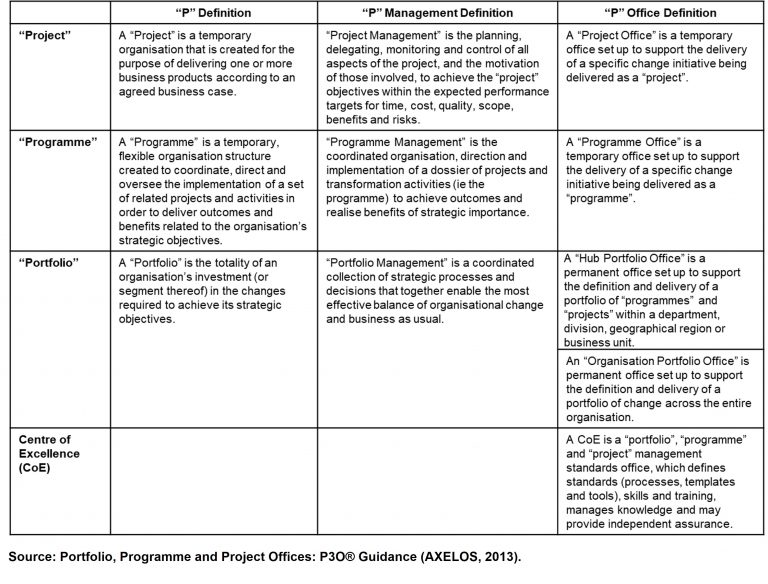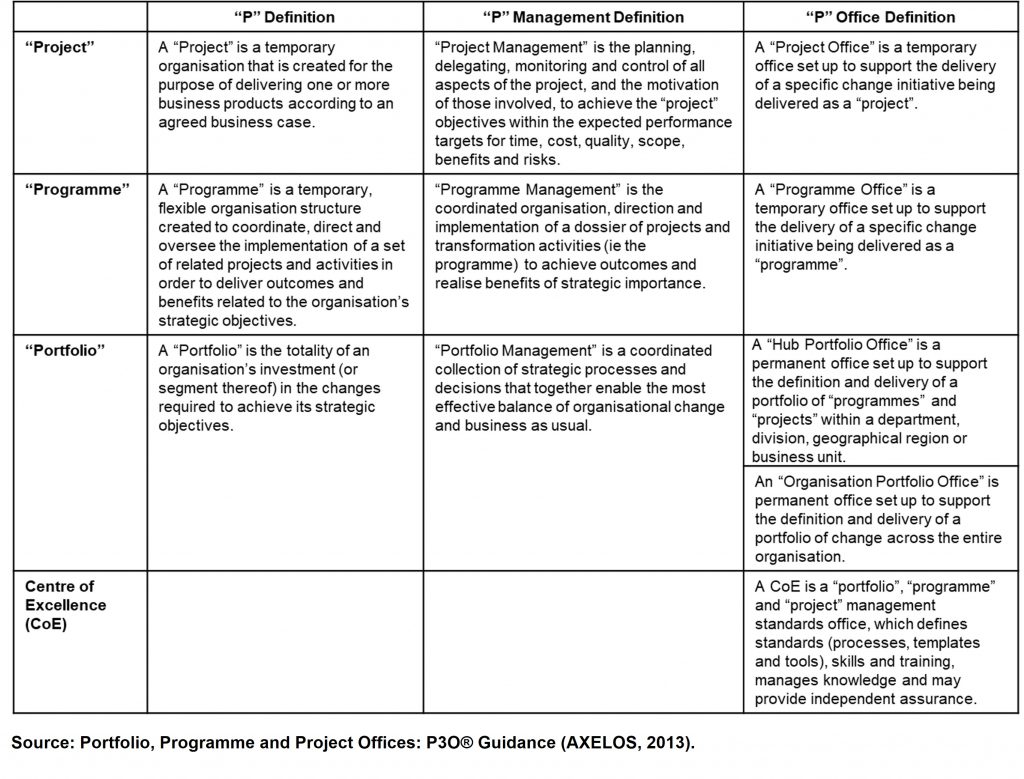The Gap Between Organisational Change And Organisational Transformation
If you spend time around change initiatives, you may hear comments about the PMO. Whether on LinkedIn or in office corridors, people sometimes express frustration, labelling PMOs as “bureaucratic,” “slow,” or even “pointless.” However, in theory, the PMO is designed to do the opposite: to help organisations implement initiatives more smoothly, consistently, and transparently.
So, why does the PMO often receive negative feedback? And what is an alternative?
Contents
So What Does The “P” In “PMO” Actually Mean?
One interpretation of what the “P” in “PMO” represents is P3O®(1).
This concept was developed by the UK Government’s Office of Government Commerce to serve as universally applicable guidance. It aims to assist organisations in establishing the necessary support structures for the successful delivery of their portfolios of change “programmes” and “projects”. The guidance outlines a hierarchy of structures, which is summarised in Exhibit 1. It also notes that “projects” can stand alone and do not need to be part of a programme.

The Need For Integrated Organisational Change Management
- Facet 1: Alterations in the operating model, business model, value chain etc of an organisation – what can be called the Enterprise Architecture;
Duumy
Read More
The role of a CMO includes:
- Being the interface between strategy formulation and strategy execution;
- Establishing and refining the methodologies including Lean Portfolio Management in an organisation specific playbook for OCM;
- Setting up and maintaining a Centre of Excellence, see Appendix III, to disseminate best practices in OCM across the organisation;
- Setting up and maintaining a template for a intranet based collaborative platform that can be replicated across initiatives and provide the basis for executive reporting;
and;
- Establishing and refining appropriate OCM governance processes to meet the requirements of overall corporate governance.
As alluded to above, the trick with a CMO is tailoring it to the specific needs of the organisation – one size does definitely not fit all.

